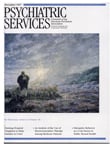Handbook of ECT
What I like best about this truly handy handbook is its brevity and conciseness. Easily read in one short sitting, it deftly capsulizes everything practical that any nurse, psychology student, psychiatric social work student, medical student, or first-year psychiatric resident needs to know about electroconvulsive therapy (ECT), fully living up to its authors' goals as a "pocket reference" for the practitioner.
About a third of the book is devoted to technique, with an exemplary focus on various aspects of seizure monitoring, a subject several of the authors have published research articles on. This section includes a numbered, stepwise list of the elements of a typical ECT treatment session, which the junior practitioner of the art would do well to memorize.
Basic concepts, including the relevant physical properties of the electrical stimulus, are briefly and cogently presented, and the elements of patient selection and preparation are covered handily.
Unlike the more comprehensive (and expensive) texts on the subject that senior psychiatric residents and attending staff will want to own, this is a book that medical students and psychiatric nurses could, and should, be required to buy during their psychiatric clerkships. They can be assured that it will not molder on the shelf but will be slipped naturally into, and out of, the pocket of a lab coat.
Dr. Abrams is professor of psychiatry at the University of Health Sciences-Chicago Medical School.



